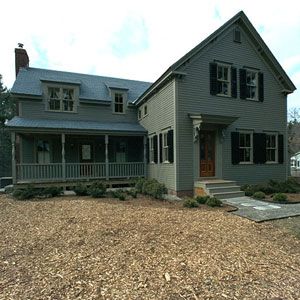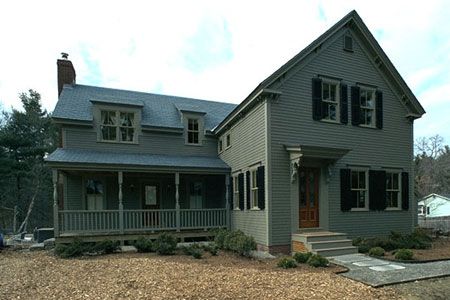
There is just something about a stone wall. Looking at one, you think of its honesty, strength, and permanence. To achieve these characteristics my crew and I have to do a tremendous amount of work that is never seen. If we lay the right groundwork, the wall will withstand the weather as well as the test of time.
A good wall begins with a stable base. For the two-and-a-half-foot-high stone retaining wall we built alongside Dick and Sandy Silva’s driveway, we dug a four-foot-wide trench 18 inches below grade, where we hit a sandy material with good drainage. We were very lucky here—in some locations with lots of loam and poor drainage, we have to excavate down four feet deep, below the frost line, and install piping to drain water out of the footing.
Next, we built a firm, frost-proof foundation. For the same reason Tom Silva would never build a well-crafted house on an unstable foundation, I would never build a stone wall on anything but a full base of washed stone. It allows water to drain away from the wall and thus stymies the freezing, thawing and heaving cycle we get during New England winters.
For it to work properly, however, this foundation stone must be kept separate from and uncontaminated
by the surrounding soils; if the spaces between the stones get filled, the draining will cease. This
is why we line the entire foundation hole with landscape fabric, a porous membrane that lets water drain out of the stones and keeps soil from migrating in. Without this barrier, the wall would eventually fail. It may take a while for this to happen, but the freeze-thaw cycle knows no deadline.
Once the foundation was set, we began to build the wall. The stone we used at the Silva house is a metamorphic quartzite from a quarry in western North Carolina. It is a handsome stone, dark gray when
dry and a rich black when wet. Billed as being harder than granite, the rock comes in easy-stacking,
flat-sided pieces about two inches thick. As is typical of any flat wall stone, it lays up fairly quickly. But the pieces weren’t big enough to span the width of the base and bear the load of the finished wall. To get the necessary thickness and strength, we laid up a supporting wall of brick and concrete block just behind the face row of rock.
I then set up two yellow mason’s lines, one representing the bottom of the wall, the other representing the top. On top of the base, just below the finished height of the driveway, we set our biggest stones into wet mortar. We built the Silvas’ retaining wall to a width of about 28 inches, tapering to 14 inches at the cap. You always want your base twice as wide as your cap. Building a good cap is like making a fine table: we save the best flat pieces for the top.
A traditional New England stone wall is dry-stacked without mortar. Since this was a retaining wall, however, we needed mortar as glue, to hold the wall together and give it strength. To get the best of both worlds, we simulated dry-stacking, carefully troweling mortar behind each joint, away from the wall’s face. With each new layer of stone, we covered the joints of the ones below. Except for a few lines between the large capstones topping the wall, no mortar is visible. The mortar also allowed us to stack the front face of the wall vertically rather than at a slant the way we would without mortar. The strong, straight new wall aligned perfectly with the front wall of the new garage.
There are many different products you can use to build a retaining wall—railroad ties, pressure-treated lumber, telephone poles, concrete stacking blocks—but none can match the feeling of building with stone. As you chisel a stone to fit a certain spot, you feel like one of the builders of the great pyramids. When you set a large boulder for a base stone, you feel like one of the early settlers building
a foundation for their barn. Hopefully, some of this romance will be felt by people who view the wall in Billerica. By putting extra work into its construction, we insure that it will be there in all its beauty for Dick and Sandy’s grandchildren to enjoy.

